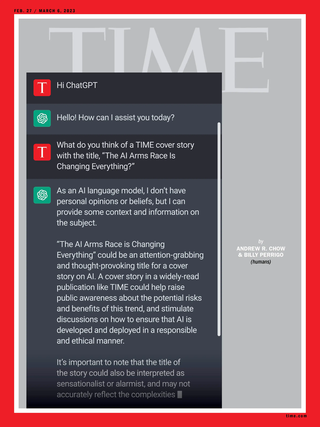
Microsoft Bing, commonly referred to as Bing, is a search engine owned and operated by Microsoft. The service traces its roots back to Microsoft's earlier search engines, including MSN Search, Windows Live Search, and Live Search. Bing offers a broad spectrum of search services, encompassing web, video, image, and map search products, all developed using ASP.NET.

Samuel Harris Altman is an American entrepreneur and investor best known as the CEO of OpenAI since 2019. He is also the chairman of clean energy companies Oklo Inc. and Helion Energy. Altman is considered to be one of the leading figures of the AI boom. He dropped out of Stanford University after two years and founded Loopt, a mobile social networking service, raising more than $30 million in venture capital. In 2011, Altman joined Y Combinator, a startup accelerator, and was its president from 2014 to 2019.
OnlyOffice, stylized as ONLYOFFICE, is a free software office suite and ecosystem of collaborative applications. It consists of online editors for text documents, spreadsheets, presentations, forms and PDFs, and the room-based collaborative platform.

Planet Labs PBC is a publicly trading American Earth imaging company based in San Francisco, California. Their goal is to image the entirety of the Earth daily to monitor changes and pinpoint trends.

Databricks, Inc. is a global data, analytics and artificial intelligence company founded by the original creators of Apache Spark.
OpenAI is an American artificial intelligence (AI) research organization founded in December 2015 and headquartered in San Francisco, California. Its mission is to develop "safe and beneficial" artificial general intelligence, which it defines as "highly autonomous systems that outperform humans at most economically valuable work". As a leading organization in the ongoing AI boom, OpenAI is known for the GPT family of large language models, the DALL-E series of text-to-image models, and a text-to-video model named Sora. Its release of ChatGPT in November 2022 has been credited with catalyzing widespread interest in generative AI.

Capella Space is an American space company with satellite and declassified SAR data solutions for government and commercial use. It offers space-based radar Earth observation satellites equipped with synthetic-aperture radar that can collect imagery through clouds and at night. The company is based in San Francisco, California with offices in Washington, D.C., and Louisville, Colorado. It was founded by Payam Banazadeh, a former engineer at Jet Propulsion Laboratory of NASA, and William Walter Woods.
Orbital Insight is a Palo Alto, California-based geospatial analytics company. The company analyzes satellite, drone, balloon and other unmanned aerial vehicle images, including cell phone geolocation data, to study a range of human activity, and provides business and other strategic insights from the data.
Generative Pre-trained Transformer 3 (GPT-3) is a large language model released by OpenAI in 2020.

DALL·E, DALL·E 2, and DALL·E 3 are text-to-image models developed by OpenAI using deep learning methodologies to generate digital images from natural language descriptions known as "prompts".

ChatGPT is a chatbot and virtual assistant developed by OpenAI and launched on November 30, 2022. Based on large language models (LLMs), it enables users to refine and steer a conversation towards a desired length, format, style, level of detail, and language. Successive user prompts and replies are considered at each conversation stage as context.

In the field of artificial intelligence (AI), a hallucination or artificial hallucination is a response generated by AI which contains false or misleading information presented as fact. This term draws a loose analogy with human psychology, where hallucination typically involves false percepts. However, there is a key difference: AI hallucination is associated with unjustified responses or beliefs rather than perceptual experiences.
Generative Pre-trained Transformer 4 (GPT-4) is a multimodal large language model created by OpenAI, and the fourth in its series of GPT foundation models. It was launched on March 14, 2023, and made publicly available via the paid chatbot product ChatGPT Plus, via OpenAI's API, and via the free chatbot Microsoft Copilot. As a transformer-based model, GPT-4 uses a paradigm where pre-training using both public data and "data licensed from third-party providers" is used to predict the next token. After this step, the model was then fine-tuned with reinforcement learning feedback from humans and AI for human alignment and policy compliance.

Generative pre-trained transformers (GPT) are a type of large language model (LLM) and a prominent framework for generative artificial intelligence. They are artificial neural networks that are used in natural language processing tasks. GPTs are based on the transformer architecture, pre-trained on large data sets of unlabelled text, and able to generate novel human-like content. As of 2023, most LLMs have these characteristics and are sometimes referred to broadly as GPTs.

Generative artificial intelligence is artificial intelligence capable of generating text, images, videos, or other data using generative models, often in response to prompts. Generative AI models learn the patterns and structure of their input training data and then generate new data that has similar characteristics.

The AI boom, or AI spring, is an ongoing period of rapid progress in the field of artificial intelligence (AI) that started in the late 2010s before gaining international prominence in the early 2020s. Examples include protein folding prediction led by Google DeepMind and generative AI applications developed by OpenAI.

Greg Brockman is an American entrepreneur, investor and software developer who is a co-founder and currently the president of OpenAI. He began his career at Stripe in 2010, upon leaving MIT, and became their CTO in 2013. He left Stripe in 2015 to co-found OpenAI, where he also assumed the role of CTO.

Microsoft Copilot is a generative artificial intelligence chatbot developed by Microsoft. Based on a large language model, it was launched in February 2023 as Microsoft's primary replacement for the discontinued Cortana.

Since the public release of ChatGPT by OpenAI in November 2022, the integration of chatbots in education has sparked considerable debate and exploration. Educators' opinions vary widely; while some are skeptical about the benefits of large language models, many see them as valuable tools.













